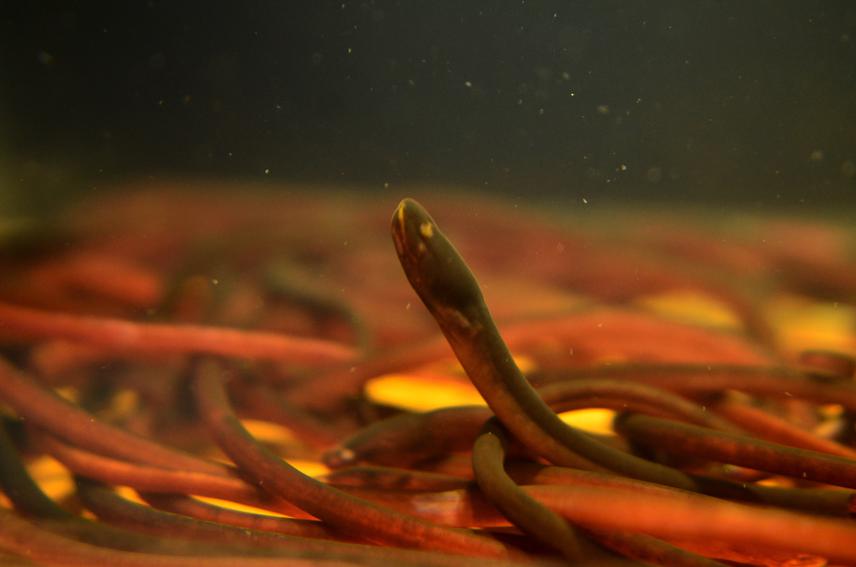V V Binoy
The subterranean fishes of the Western Ghats region comprise one of the most poorly known groups of freshwater fishes in the Indian sub-continent with the entire species group assessed as Data-Deficient (by the IUCN). The proposed project aims to unravel the diversity, distribution, autoecology and population structure of these enigmatic species, to inform conservation action.

Monopterus.
Subterranean life is an integral part of groundwater resources, and therefore the conservation of groundwater and the protection of encompassing biodiversity cannot be separated. Unfortunately, the diversity of life in subterranean environments has traditionally been less explored, as compared to those in surface freshwater habitats. Even though invertebrates dominate subterranean (hypogean) animal diversity a number of fish species are also known to inhabit these ecosystems. Subterranean fishes, living examples of regressive evolution, occupy a unique position in the web of life, as most of them are endemic, phyletically isolated and form components of truncated food webs. Amusingly, their pattern of distribution continues to remain an enigma since close familial relatives of many species are reported from distantly located continents.
Only eight subterranean fish species are known from India till date, out of which six occur in the western peripheral regions of the Western Ghats located in the southern Indian state of Kerala. The subterranean fishes inhabiting peripheral region of the Western Ghats have not got any strong scientific attention, though the IUCN has listed these taxa as Data Deficient and recommended immediate research to fill in the knowledge gaps. Out of the known six species, two have been discovered in the recent past (since 2012) while the only available information on the remaining species is restricted to basic morphology and type locality. A review of literature reveals that most of the subterranean fishes that occur in the Western Ghats survive in wells or springs located in private lands, and the only known epigean population has been recorded from paddy fields. Although habitats of these subterranean fishes are subjected to several anthropogenic stressors, no attempt has been carried out to date to understand diversity, distribution and autoecology of these cryptic species. Furthermore it is impossible to develop and implement any effective conservation action plan for these unique taxa without creating awareness and outreach among local communities since their habitats are located in human dominated landscapes.
The current project aims to determine the diversity, distribution, population structure and ecological conditions supporting the subterranean fish species as well as their epigean counterparts to inform conservation action. Understanding local ecological knowledge, as well as attitudes and perceptions of local communities towards these species, initiating permanent mechanisms for protecting subterranean fishes by bridging educational institutions, local nature clubs, NGOs and local government bodies, and creating awareness about hypogean fishes are also be key elements of the project.